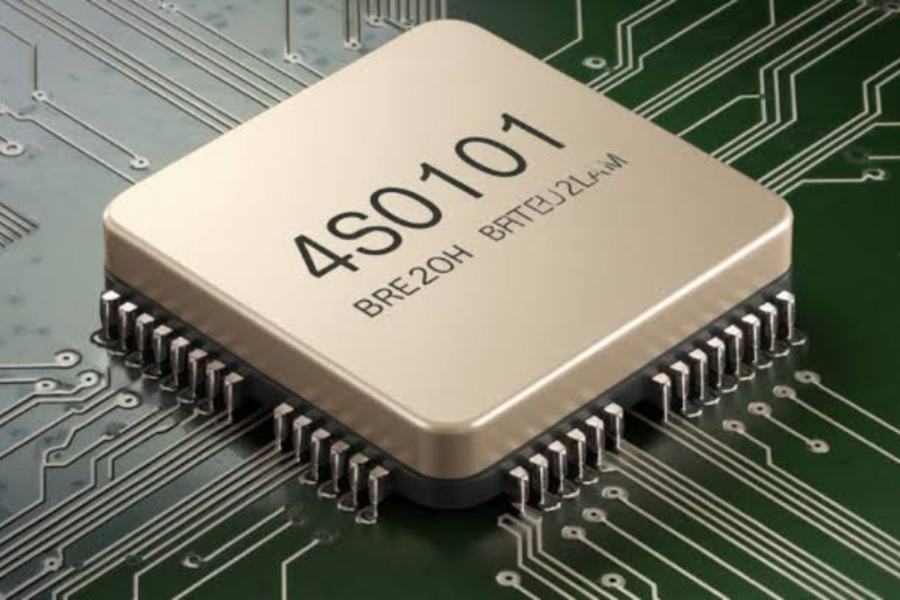Beginning to Use the 4S0101 Chip: Advice for Novices
Welcome to the microchip world! If you’ve heard of the 4S0101 chip, you’re in for a treat. This tiny part is a powerhouse that opens up a world of possibilities. Knowing all about this chip is crucial, whether you’re a professional engineer seeking for dependable components or a hobbyist hoping to develop something unique. The 4S0101 chip has special characteristics and capabilities that can make your job even better. All set to jump right in? Let’s go over all you need to know to get the 4S0101 chip started!
Understanding the Basics of Microchips
Microchips, which are nimble but potent, drive modern technology. Numerous products, including smartphones and common household appliances, are created by them. The intricate integrated circuits that process data and carry out commands on these nitty-gritty silicon wafers enable computers and cameras to function flawlessly.
Microchips communicate using binary code, a sequence of ones and zeros, which enables them to complete intricate tasks quickly and effectively. A microchip’s design is centered on transistors, diodes, and capacitors, all of which work together to process and manage electrical signals. The arrangement of these parts determines each chip’s capabilities, efficiency, and speed.
Microchips are growing in size and power due to continuous research and development. They may be used in many different types of systems, including as computer systems, medical equipment, and automobile systems. If you wish to understand more about the world of microchips, you must comprehend these basic ideas.
Benefits of Using the 4S0101 Chip
With its many advantages, the 4S0101 chip is a well-liked option for both novices and seasoned experts. Its small size allows for easy integration into a variety of devices, saving designers and projects a significant amount of room. Battery-operated gadgets benefit greatly from this chip’s effective low power consumption, which extends battery life without sacrificing functionality.
An additional outstanding advantage of the 4S0101 is its exceptional processing speed. One factor in the chip’s consistent and efficient operation is its quick data processing. It is suitable for a variety of uses because to its speed and adaptability, ranging from consumer electronics to industrial machinery. In addition, a robust support network for the 4S0101 chip provides insights, advice, and troubleshooting tools to help users make the most of it.
How to Pick and Buy the Best 4S0101 Chip for Your Requirements
Choosing the correct 4S0101 chip doesn’t have to be as difficult as it might seem. Start by determining the power consumption, processor speed, and memory capacity needed for your particular project. Comprehending these will assist you in reducing your options.
Next, think about trustworthy vendors with good customer ratings and a focus on microchips. Having trustworthy suppliers is essential to getting high-quality goods. Additionally, see if the chip works with any software or devices you may already have. For example, certain projects may call for a certain 4S0101 chip type or variation, thus it’s critical to make sure it works with your system.
It’s a good idea to research pricing from several vendors when making a purchase, as well as any choices for bulk purchases that can fit your budget better. In order to protect your investment in the event that problems occur during installation or usage, you should carefully verify the warranty terms on the chips you are purchasing.
Also Read: Understanding 602.88 Divided by 150.8: A Simple Breakdown
Advice on How to Install and Configure the 4S0101 Chip
Installing the 4S0101 chip is relatively straightforward if you follow a few simple steps. Start by setting up a clean, static-free workspace, as static electricity can damage the chip during handling. Consult the datasheet specific to your chip model; it contains crucial information regarding pin configurations and electrical characteristics for a successful setup.
To prevent chip damage when soldering connections, use a soldering iron with a small tip and use very little heat. After attaching the chip, make sure all connections are correct because precision is crucial. The operation of the entire circuit might be impacted by a single misplaced wire.
After everything is in place, gradually power up your circuit while closely monitoring voltage levels. This method helps detect any potential issues early on, allowing for safe and smooth operation of your microchip.
Troubleshooting Common Issues with the 4S0101 Chip
While working with the 4S0101 chip, you may encounter a few common issues. One such issue is power supply fluctuation. To tackle this, ensure a stable voltage and examine your connections to prevent any unwanted disruptions. Data transmission errors may also arise due to incorrect protocol settings in the software. Verify your protocol configurations to ensure seamless communication between the chip and other devices.
Unexpected behavior or random resets could be the result of loose solder joints. Checking for solid connections is crucial to maintain the chip’s reliable performance. If you notice a slowdown in performance, it might be worth reviewing your code efficiency. Optimizing your code can significantly improve the chip’s responsiveness and functionality. By addressing these potential issues early on, you can maximize your experience with the versatile 4S0101 chip.
Prospective Applications and Upcoming Developments for the 4S0101 Chip
The 4S0101 chip has a bright future ahead of it, particularly as new developments in technology continue to create new opportunities. This microprocessor is in a position to significantly improve connection and efficiency across a number of sectors as they shift toward automation and smart devices.
One of the most promising applications for the 4S0101 is in the realm of the Internet of Things (IoT). Given its compact size and efficient processing, the chip is well-suited for smaller gadgets that require reliable data handling without excessive power consumption. IoT applications can leverage this chip to enable smart connectivity across devices, from home appliances to wearable tech.
Furthermore, the 4S0101 chip may play a key role in edge computing as artificial intelligence advances. By processing data locally, edge computing reduces latency and boosts real-time data analytics performance. When used for applications such as industrial machine control or environmental monitoring, this chip may provide real-time input for increased responsiveness and efficiency.
The healthcare sector is another one that might benefit from the 4S0101’s capabilities. Wearables with advanced sensors may utilize this chip to monitor health indicators and send data to medical professionals. Innovative methods to patient treatment, diagnosis, and monitoring are made possible by the availability of accurate, current health data.
We can anticipate even more creative applications for the 4S0101 chip in a variety of domains as technology advances, highlighting its adaptability and capacity to support state-of-the-art advancements.
Conclusion
The 4S0101 chip is a powerful tool that has become invaluable to anyone exploring the field of microchips. For both beginners and professionals, understanding this chip’s unique capabilities and how it can enhance a wide range of projects is essential. Whether you’re a hobbyist or working on professional applications, the 4S0101 chip offers a world of potential that can elevate your designs and expand your project’s scope.
Getting started with this chip might seem intimidating, but with a bit of guidance and a willingness to learn, integrating the 4S0101 can bring your electronics projects to new heights. The troubleshooting experience you gain along the way, along with the support from the extensive community around this chip, will only deepen your expertise and understanding of electronics.
Staying updated on the latest developments related to the 4S0101 chip will ensure you’re using it to its full potential as technology advances. Embracing the challenges along the way will not only enhance your personal knowledge but also contribute to broader innovation in electronics. Each project you undertake with this chip brings you closer to new and exciting possibilities, pushing the boundaries of what microchips can achieve. So keep experimenting and exploring—you never know what breakthroughs the 4S0101 chip might lead you to next!
If You Want To Learn More Information And Updates So Please Visit: BlogVibe.co.uk






